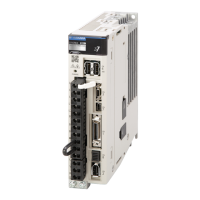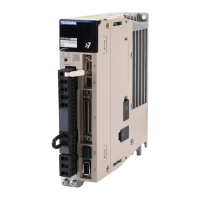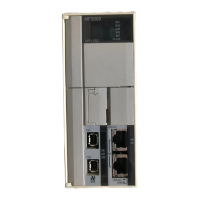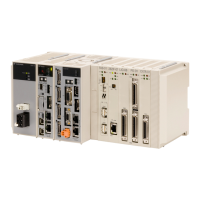8.7 Autotuning with a Host Reference
8.7.4 Operating Procedure
8-38
7.
Click the Yes Button.
8.
Input the correct moment of inertia ratio and click the Next Button.
• Mode selection Box
Set the mode.
• Mechanism selection Box
Select the type according to the machine element to
drive.
If there is noise or if the gain does not increase, better
results may be obtained by changing the rigidity type.
Select the type according to the following guidelines.
Mode Selection Description
1: Standard
Standard gain adjustment is per-
formed. In addition to gain adjust-
ment, notch filters and anti-
resonance control are automatically
adjusted.
2: For positioning
Tuning is performed for positioning
applications. In addition to gain
adjustment, model following control,
notch filters, anti-resonance control,
and vibration suppression are auto-
matically adjusted.
3: For positioning
especially to pre-
vent overshooting
Tuning is performed for positioning
applications with emphasis on elimi-
nating overshooting. In addition to
gain adjustment, notch filters, anti-
resonance control, and vibration sup-
pression are automatically adjusted.
• Tuning parameters Box
Specify the parameters to use for tuning.
If you select the Start tuning using the
default settings Check Box, the tuning
parameters will be returned to the default
settings before tuning is started.
Mechanism
Selection
Description
1: Belt mechanism
Tuning is performed for a mecha-
nism with relatively low rigidity, e.g.,
a belt.
2: Ball screw
mechanism or linear
motor
Tuning is performed for a mecha-
nism with relatively high rigidity, e.g.,
a ball screw or Linear Servomotor.
Use this setting if there is no other
appropriate setting.
3: Rigid model
Tuning is performed for a mecha-
nism with high rigidity, e.g., a rigid
body system.
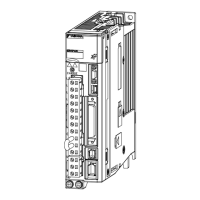
